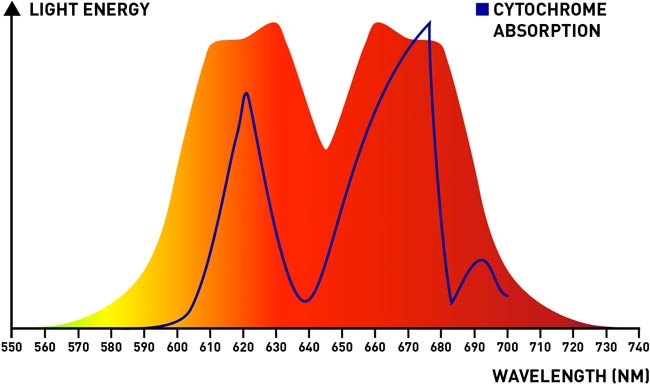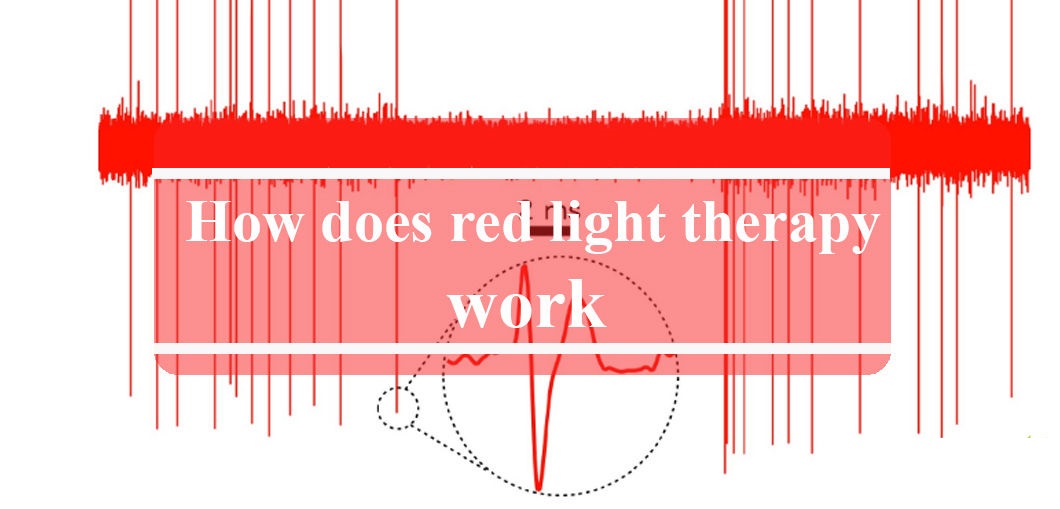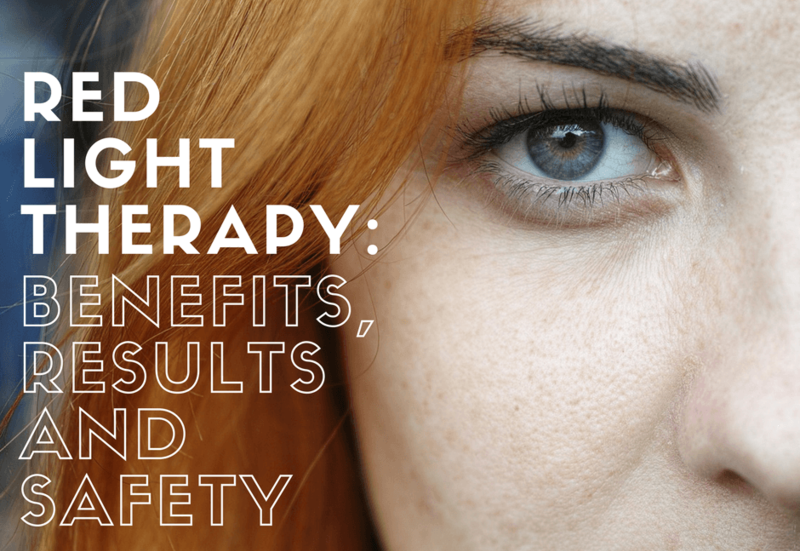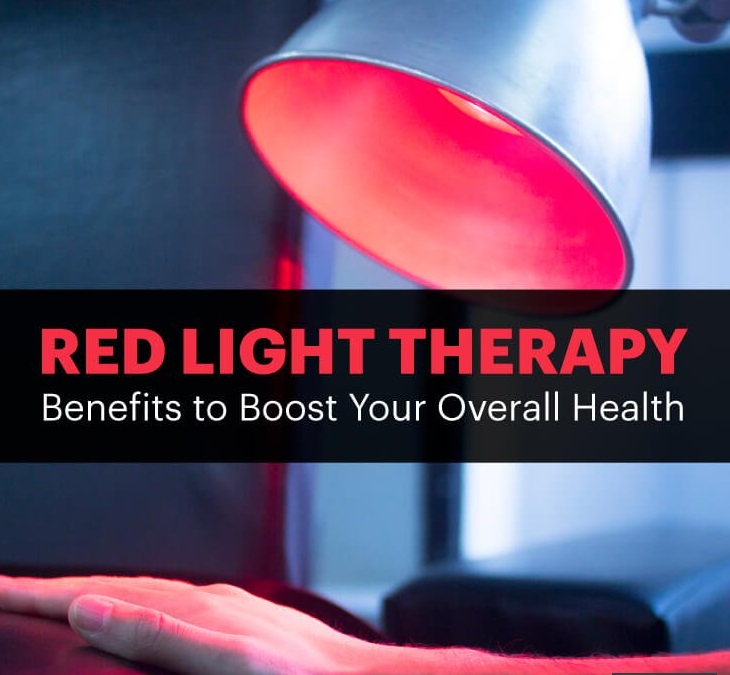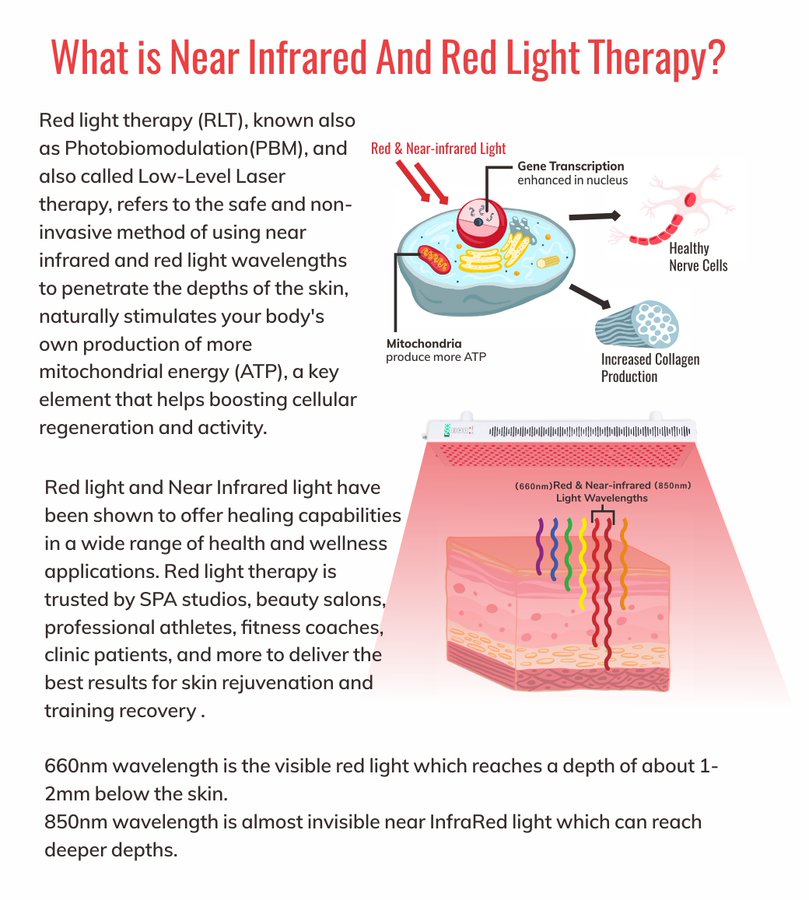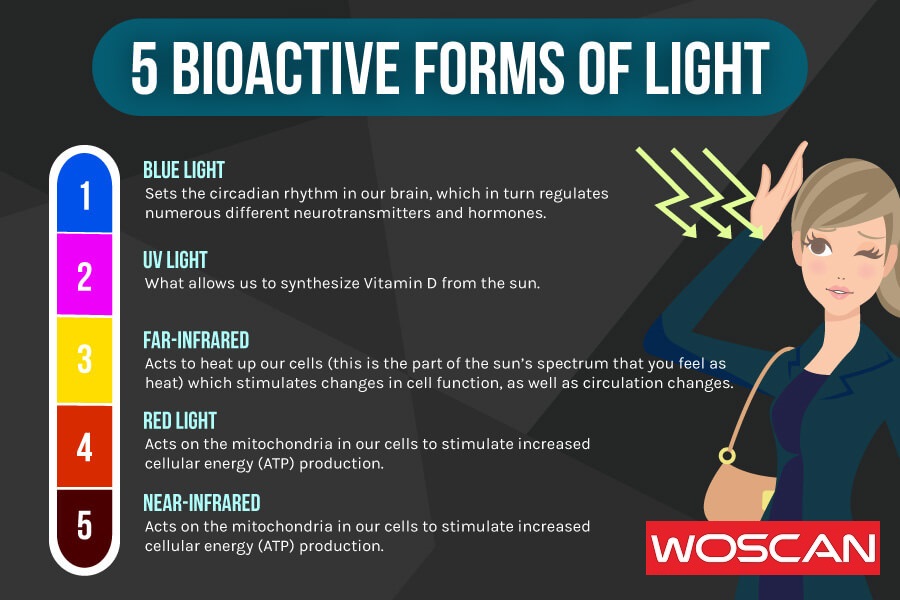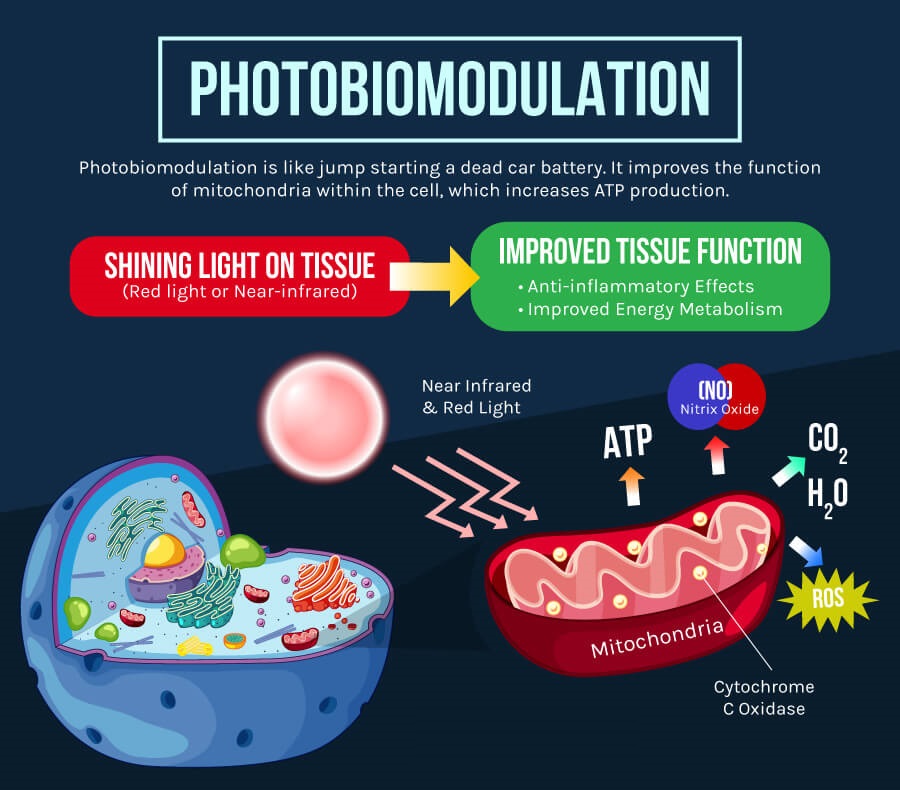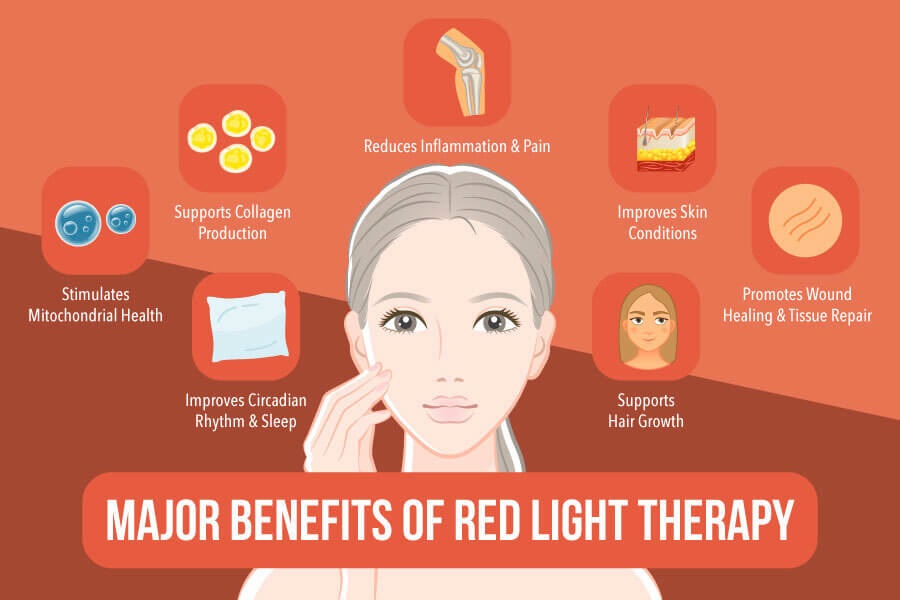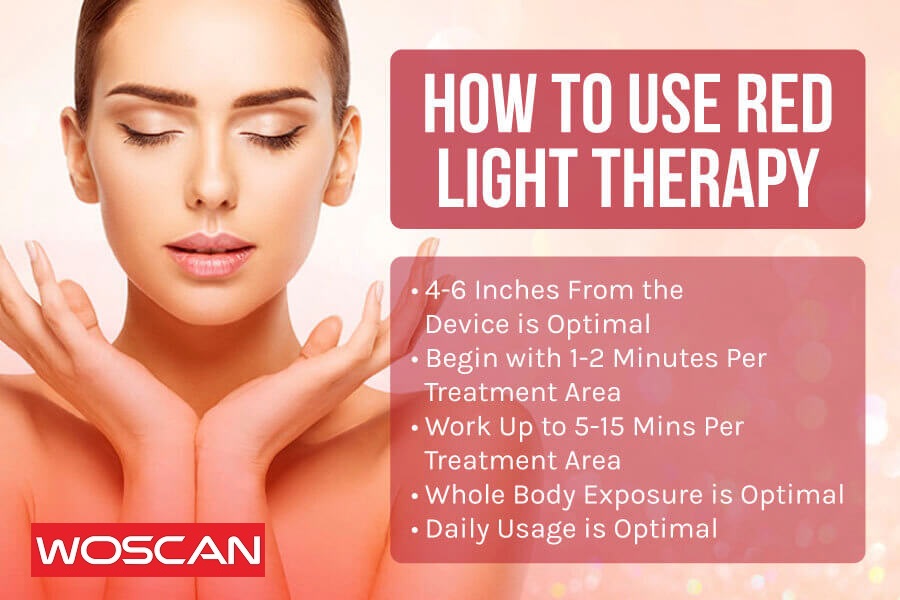
Asthma, a chronic respiratory condition marked by airway inflammation and bronchoconstriction, significantly impacts the lives of millions globally. Characterized by symptoms such as wheezing, shortness of breath, and chest tightness, this condition not only affects daily activities but also poses a persistent health challenge. Traditional management strategies primarily focus on controlling symptoms and preventing exacerbations, often relying on a combination of bronchodilators and anti-inflammatory agents.
In the realm of innovative therapeutic interventions, Red Light Therapy (RLT) emerges as a compelling subject of exploration. RLT, also known as Photobiomodulation (PBM), utilizes specific wavelengths of light to elicit biological responses at the cellular level. This therapy has garnered attention in various medical fields for its potential to modulate biological processes without the invasiveness of traditional medical procedures.
The purpose of this article is to explore the potential of RLT as a complementary approach to managing it. By examining the physiological mechanisms that are initiated by RLT, we are excited to share how this non-invasive therapy could benefit those suffering from asthma. Our exploration will include an in-depth look at the interaction of light with mitochondrial components, particularly cytochrome c oxidase, and the subsequent cascade of cellular events leading to improved respiratory function. We will also discuss the scientific basis for the potential reduction in airway inflammation and enhancement in bronchial dilation offered by RLT.
Our goal is to enlighten potential users and healthcare providers alike about the emerging role of Red Light Therapy in asthma management, grounded in scientific understanding and clinical insights.
Benefits of Red Light Therapy in Asthma Management
Based on these studies, the potential benefits of Red Light Therapy in asthma management include:
- Reduction in Inflammatory Markers: RLT has demonstrated a capacity to lower critical inflammatory mediators like leukotrienes, thromboxanes, and various cytokines, which play a significant role in the pathogenesis of asthma.
- Decreased Mast Cell Degranulation: Mast cells are central to allergic responses and asthma exacerbations. RLT’s ability to modulate mast cell degranulation can be pivotal in reducing the severity of asthma attacks.
- Enhanced Anti-Inflammatory Cytokine Levels: Increasing the level of anti-inflammatory cytokines such as IL-10 helps in balancing the immune response, thereby potentially reducing the chronic inflammation characteristic of asthma.
- Improvement in Lung Function: By addressing key aspects of asthma pathology—such as inflammation and immune response modulation—RLT could contribute to overall improvements in lung function and respiratory health.
Red Light Therapy emerges as a promising adjunctive therapy for asthma, particularly in cases where conventional treatments are less effective. The therapy’s potential to reduce inflammation, modulate immune responses, and improve lung function aligns well with the needs of asthma management. As research in this area continues to evolve, RLT could become an integral part of holistic asthma care strategies.
Understanding Red Light Therapy
Red Light Therapy (RLT), also referred to as photobiomodulation (PBM), represents a non-invasive therapeutic approach that harnesses specific wavelengths of light to elicit biological changes at a cellular level. This therapy operates primarily in the red to near-infrared spectrum, typically between 600 and 1000 nanometers (nm). The unique characteristic of this light spectrum is its ability to penetrate skin and soft tissues, reaching deeper cell layers, including muscles and nerves.
The core apparatus in RLT comprises light-emitting diodes (LEDs) or lasers that emit light at predetermined wavelengths. This equipment is designed to deliver light with precise energy output, ensuring controlled exposure to the therapeutic wavelengths. During a therapy session, these light sources are positioned near the skin surface, targeting specific areas of the body or whole-body therapy.
The mechanism of action in RLT revolves around the absorption of light by mitochondrial chromophores, particularly cytochrome c oxidase, a key enzyme in the electron transport chain. This absorption triggers a series of biochemical changes:
- Enhanced Cellular Metabolism: Upon absorbing red and near-infrared light, cytochrome c oxidase facilitates the enhanced production of adenosine triphosphate (ATP), the primary energy currency of the cell. This boost in ATP production supports various cellular functions, including healing and regeneration.
- Release of Nitric Oxide: Another crucial aspect of RLT is the release of nitric oxide, a signaling molecule previously bound to cytochrome c oxidase. This release has a vasodilatory effect, improving blood circulation and oxygenation of tissues, which is critical in managing conditions like asthma, where oxygenation is critical.
- Modulation of Reactive Oxygen Species (ROS): RLT influences the balance of ROS within cells, reducing oxidative stress. This reduction in oxidative stress is pivotal in managing inflammatory processes, which are central to this pathology.
- Reduction of Inflammation and Edema: By modulating inflammatory mediators and reducing oxidative stress, RLT can contribute to a decrease in inflammation and edema in the airways, potentially easing the symptoms.
In summary, Red Light Therapy presents a multifaceted approach to cellular health, leveraging the body’s natural processes to enhance energy production, improve circulation, and modulate inflammatory responses. The implication of these mechanisms in the context of asthma therapy opens a new frontier for exploration and potential therapeutic application.
The Science Behind Red Light Therapy
The efficacy of Red Light Therapy (RLT) in various medical applications, including potential benefits for asthma, is grounded in its profound impact on cellular and molecular levels. Understanding the scientific basis of RLT involves delving into the realms of biochemistry, photophysics, and cellular biology.
PHOTOBIOMODULATION MECHANISM
- Mitochondrial Activation:
At the core of RLT’s mechanism is the activation of mitochondria, the cell’s powerhouses. This is primarily achieved through the absorption of red and near-infrared light by cytochrome c oxidase, a critical enzyme in the mitochondrial respiratory chain.
The interaction between light and cytochrome c oxidase leads to an increase in mitochondrial respiration, thereby elevating the production of adenosine triphosphate (ATP). This surge in ATP enhances cellular energy, facilitating various physiological processes, including tissue repair and regeneration.
- Release of Nitric Oxide:
RLT facilitates the dissociation of nitric oxide (NO) from cytochrome c oxidase. NO is a vital signaling molecule that plays a crucial role in vasodilation, improving blood flow and tissue oxygenation.
The enhanced blood flow and oxygenation are particularly beneficial for asthma management, as they could help reduce hypoxia (oxygen deficiency) in respiratory tissues.
- Reduction in Oxidative Stress:
RLT modulates the generation and scavenging of reactive oxygen species (ROS), which are by-products of cellular metabolism. An imbalance in ROS can lead to oxidative stress, a key factor in inflammation and cellular damage.
By regulating ROS levels, RLT contributes to the reduction of oxidative stress, thereby potentially mitigating inflammation in the respiratory system, a core issue in asthma.
BIOLOGICAL IMPACTS RELEVANT TO ASTHMA
- Anti-Inflammatory Effects:
RLT has been observed to downregulate pro-inflammatory cytokines while promoting anti-inflammatory responses. This shift in the inflammatory profile can be instrumental in managing chronic inflammatory conditions like asthma.
The therapy’s potential to decrease airway inflammation could lead to reduced bronchial hyperresponsiveness, a hallmark of asthma.
- Bronchial Dilation:
By improving tissue oxygenation and reducing inflammation, RLT may aid in the relaxation of bronchial muscles. This relaxation can lead to bronchial dilation, easing the constriction that characterizes asthma attacks.
Enhanced bronchial dilation can result in better airflow, reducing the severity of asthma symptoms and improving respiratory function.
The science behind Red Light Therapy elucidates a complex interplay of photonic energy absorption, mitochondrial activation, and subsequent physiological responses. These responses, particularly in the context of reducing inflammation and improving tissue oxygenation, hold significant promise for asthma therapy. As research progresses, the full scope of RLT’s potential in asthma management continues to unfold, offering new avenues for complementary therapeutic strategies.
Red Light Therapy in Asthma Management
The application of Red Light Therapy (RLT) in managing asthma signifies a novel approach, leveraging the therapy’s ability to modulate cellular and inflammatory responses. Recent research has provided insights into the specific ways RLT can impact the underlying pathophysiology of asthma.
- Study: Beneficial Effects of Infrared Light-Emitting Diode in Corticosteroid-Resistant Asthma
This study highlighted the effectiveness of RLT in reducing several key inflammatory markers associated with asthma. The findings stated: “The treatment with ILED reduced the lung cell migration; myeloperoxidase activity; mast cell degranulation; and the levels of leukotriene B4, thromboxane B2, prostaglandin E2, tumoral necrosis factor alpha, and interleukins 17 and 6.”[1]
These results are significant, indicating a comprehensive reduction in inflammatory processes that are typically heightened in asthma, especially in forms resistant to standard corticosteroid therapy.
- Study: Transcutaneous Systemic Photobiomodulation Reduced Lung Inflammation in Experimental Model of Asthma
Another pivotal study in this field showed that “transcutaneous systemic irradiation reduced lung inflammation by altering mast cells degranulation and IL-10 level.”[2]
This study underscores the role of RLT in modulating immune responses, specifically through the alteration of mast cell activity and the regulation of interleukin 10 (IL-10), a key anti-inflammatory cytokine.
Integrating Red Light Therapy with Conventional Asthma Treatment
Incorporating Red Light Therapy (RLT) into the existing regimen for asthma management necessitates a collaborative and well-informed approach. Understanding how RLT complements conventional asthma therapies is key to maximizing its benefits while ensuring patient safety and efficacy.
COLLABORATIVE CARE APPROACH
- Combining RLT with Standard Asthma Therapies:
RLT should be viewed as a complementary modality rather than a standalone therapy. It can be integrated with standard asthma treatments like inhaled corticosteroids, bronchodilators, and leukotriene modifiers.
The photobiomodulation effects of RLT, particularly its anti-inflammatory and immunomodulatory actions, can synergize with these conventional therapies to enhance overall respiratory function and reduce symptom severity.
- Consultation with Healthcare Professionals:
It is imperative that the integration of RLT into an asthma management plan is done under the guidance of healthcare professionals. This ensures that the therapy is applied correctly and safely, considering the patient’s unique medical history and current treatment regimen.
Pulmonologists, allergists, and other asthma care providers can provide valuable insights into how RLT can be effectively combined with existing medications and interventions.
MECHANISMS OF ACTION IN COMPLEMENTARY THERAPY
- Photobiomodulation and Inflammation:
RLT’s potential to modulate inflammatory processes at a cellular level can complement the anti-inflammatory effects of standard asthma medications. This dual approach may lead to a more pronounced reduction in airway inflammation and hyperresponsiveness.
- Improving Bronchial Dynamics:
By enhancing tissue oxygenation and potentially reducing bronchial muscle spasms, RLT can aid in improving bronchial dynamics. This improvement, when combined with the bronchodilatory effects of conventional asthma medications, can lead to better airway function and reduced symptomatology.
- Holistic Asthma Management:
Asthma is a multifactorial disease, and a holistic approach to management is often more effective. Integrating RLT into asthma care can address various aspects of the disease, including cellular health, immune response, and tissue repair processes, thereby enhancing the overall treatment efficacy.
Integrating Red Light Therapy into conventional asthma treatment plans offers a promising avenue for improving asthma management. This integration should be carefully planned and monitored, keeping in mind the unique mechanisms of action of RLT and how they complement existing asthma therapies. By doing so, a more holistic and effective approach to asthma care can be achieved, potentially leading to better patient outcomes.
Red Light Therapy (RLT) emerges as a significant adjunctive modality in the realm of asthma management. This article has elucidated the multifaceted mechanism of action of RLT, highlighting its potential to enhance mitochondrial function, reduce oxidative stress, modulate inflammatory responses, and improve overall respiratory function. The photobiomodulatory effects of RLT, particularly in the context of inflammation and bronchial dynamics, offer a complementary approach to traditional asthma therapies.
The integration of RLT into existing asthma care regimens represents a forward-thinking approach to managing a complex and multifactorial condition. By combining the anti-inflammatory, immunomodulatory, and tissue reparative capabilities of RLT with standard asthma therapies, a more holistic management strategy can be realized. This synergy has the potential to improve patient outcomes, reduce the severity of asthma symptoms, and enhance the quality of life for those suffering from this chronic respiratory condition.
As we advance our understanding of the biological and physiological impacts of RLT, it is crucial for healthcare professionals and patients alike to remain informed and proactive in considering this therapy as part of a comprehensive asthma management plan. Ultimately, the goal is to harness the full spectrum of available therapeutic options, including RLT, to deliver personalized, effective, and safe asthma care.
With ongoing research and clinical exploration, the role of Red Light Therapy in asthma management is poised to evolve, offering new avenues for improving respiratory health and patient well-being.
[1] Brochetti RA, Klein S, Alonso PT, Schapochnik A, Damazo AS, Hamblin MR, de Souza Setubal Destro MF, Lino-Dos-Santos-Franco A. Beneficial effects of infrared light-emitting diode in corticosteroid-resistant asthma. Lasers Med Sci. 2022 Apr;37(3):1963-1971. doi: 10.1007/s10103-021-03457-0. Epub 2021 Nov 6. PMID: 34743255.
[2] Alonso PT, Schapochnik A, Klein S, Brochetti R, Damazo AS, de Souza Setubal Destro MF, Lino-Dos-Santos-Franco A. Transcutaneous systemic photobiomodulation reduced lung inflammation in experimental model of asthma by altering the mast cell degranulation and interleukin 10 level. Lasers Med Sci. 2022 Mar;37(2):1101-1109. doi: 10.1007/s10103-021-03359-1. Epub 2021 Jun 19. PMID: 34146193.




